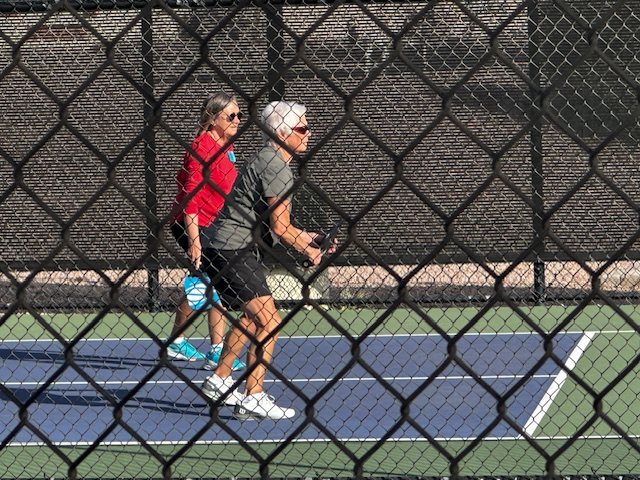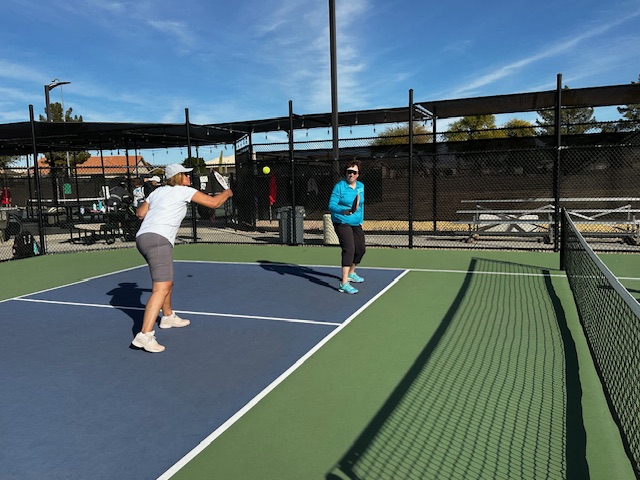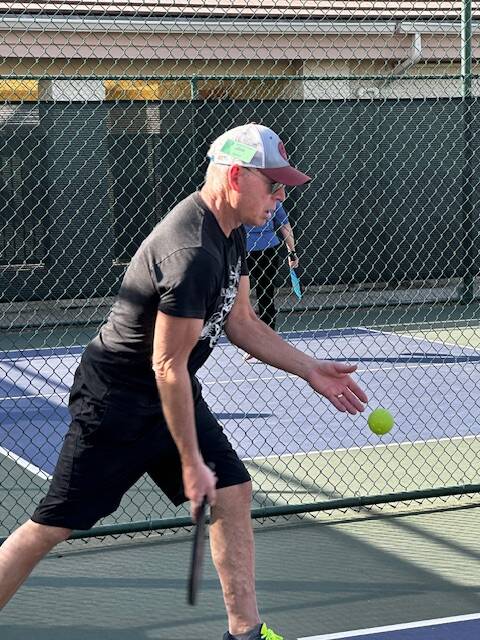Must be a Club member to attend these lessons
Tuesday, Friday 11am, Courts 1-4 ( 6 weeks). Watch the Calendar for starting dates of each session.
OBJECTIVES
3.0, Skill level should also possess all 2.5 skills
• Demonstrates placement variety on serves
• Improved control of return of serves (ground-strokes), advances to NVZ
• More consistent dinks while alternating from cross court to down the line
• Uses block shot effectively (punch volley) at the net
• Sustains a short volley (in the air) exchange at the net
• Can perform a 3rd shot drop from the transition area
• Moving as a team for dinks & volleys
• Can perform an overhead with better control
• Better control on backhand ground strokes
• Keeps ball in play during short rallies
• Attempts offensive lobs at NVZ during play
• Understands pace, attempting to adjust ball speeds (serves, ground-strokes, volleys
• Avoids hitting into the net on most strokes


sAMPLE lESSON – The Dink Game
Drill: Figure 8 Drill – Focus on just the bounce version of this drill.
Start by dinking (letting the ball bounce) straight across, next player dinks cross court, next across, fourth dinks cross court. After a while reverse the direction. Good example shown in the video.
Both levels: includes the figure 8 drill! https://www.youtube.com/watch?v=tBTXiPcxFEY
To be a good pickleball player you must learn and perfect several skills, none more important than the dink shot.
A dink is a soft shot, made with the face of the paddle open (paddle face up), and hit so that it clears the net and drops into the non-volley zone (kitchen). It is hit after the ball bounces.
Remember you can step into the non-volley zone any time except when you are hitting a volley (in the air). After the ball bounces you can go all the way to the net to hit the ball, providing you do not touch the net with any part of your body, clothing or paddle. Your entire soft net game depends on your ability to execute consecutive dink shots with success.
During a Dink Rally
- Stand right at the kitchen line in a good ready position (split step?)
- Hold the paddle in front of your chest
- The head of the paddle is perpendicular to the ground. This allows a
quick smooth movement to either side - Move to the ball using short quick steps if necessary
- Knees bent, body low and keep your balance
- Reach for the ball with an open paddle face (the face is up)
- Contact the ball LOW to the ground with a smooth lifting motion. Do not hit the ball!
- Angle dinks give you the most room to work with and typically go over the lowest part of the net.
For better players, dinking can continue for quite a long time. Don’t be impatient. The dink requires a soft, delicate touch. Lift the ball softly, trying to hit the ball will create a pop-up.
Beginners– Ok, beginners really don’t get into a dink game do they? At this level, players really enjoy just hitting the ball back and forth. That’s fine since you just need more court time.
Low-Intermediates – Sometimes the name of the game is who can return the softest dink. Remember, a dink into the opponent’s kitchen forces them to use an underhand shot on their return. At this level, most players are not good at dinking. Can you vary a straight across dink with a great angle shot. As you get better, consider trying a surprise lob from the kitchen line.
Mid-Intermediates – Your dink games will be longer and more consistent. Look for opportunities to do a ‘speed-up’ and surprise your opponent. The offensive lob from the kitchen line forces your opponent back to the baseline, giving you the advantage.

